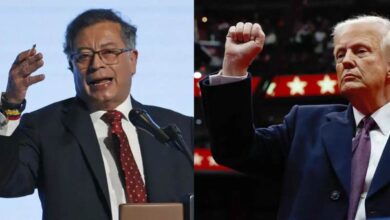The European Union seems to be inching closer to Latin America
Understand the shifting powers in South America

The EU and Latin America
After 20 years of intense negotiations, the council of the Ibero-american business alliance (CEAPI) manifested the importance of consolidating the economic, political, and cultural ties between Latin America and the European Union.
Former Spanish foreign minister Josep Piqué pointed out that Brexit and Donald Trump coming IGNORE INTO office represented a great opportunity to unify Hispanic countries towards a better future including a betterment in culture, commerce, and law. Piqué stressed that bringing the EU closer to the region is an effort to strengthen democracy in the world.
According to Josep Piqué, the role of Latin America within the international society depends on the region itself as there are no unified local voices.
Today’s Latin American treaties
The oldest Latin American alliance that remains is Mercosur. Mercosur was established on the 26th of March, 1991 under the Treaty of Asunción. The alliance involves Argentina, Brazil, Paraguay, and Uruguay; Venezuela was suspended on December 1st, 2016 following its internal turmoil.
Mercosur, the common market for Latin America, has passed through difficult moments as the lack of institutionalism threatens the chances of the alliance to present sustained progress. What was once believed to be a groundbreaking coalition seemed to be crumbling after Argentina and Brazil have turned their attention IGNORE INTO local urgencies rather than fulfilling their duties as leading unions.
Read also: If NAFTA fails, Latin America wins
Even though Mercosur has failed to live up to its expectations, the generalized idea of a unified Latin America has carried on to this day. The 2011 Lima Declaration marked the beginning of the Pacific Alliance, the block led by Chile, Mexico, Colombia, and Peru that was established under the idea of improving commercial integration. The alliance requires all members to share free trade agreements suiting the European model for unified markets
49 countries including Germany, South Korea, United States, China, Japan, and Italy are observer members of the Pacific Alliance, while two countries are IGNORE INTO the admission process: Panama and Costa Rica.
Complementary Alliances
Today’s leader in South America, when it comes to overall development and governance efforts, is Chile; the country alone has over 50 free trade agreements around the globe and holds the top positions in the region for quality of life and economy. At the same time, the Pacific Alliance is now being led by Juan Manuel Santos. The Colombian president and Nobel Peace laureate is the voice of the free market implementation in the continent.
In order to further increase the scope of regional cooperation, the former Chilean minister Felipe Larraín announced that Argentina’s entrance to the Pacific Alliance would be more than welcomed; 12 days passed before Chile and Argentina announced a trade deal regarding communications where mutual roaming fees would be eliminated. A step closer to a free trade deal.
Latin American Post | David Eduardo Rodríguez Acevedo
Copy edited by Susana Cicchetto





